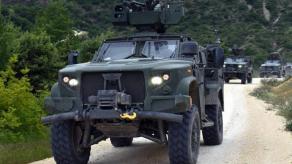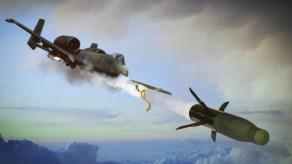A surprising detail has emerged about Iran’s transfer of Fath-360 missiles to russia. According to Reuters, although these attack missiles with a range of 120 km have been delivered, russia is still likely unable to use them because Iran has yet to provide the necessary launchers.
This information, sourced from European and U.S. intelligence, raises questions about if and when russia will be able to deploy the missiles. One theory is that Tehran may be holding back the launchers to keep some leverage in negotiations with Western nations. Alternatively, russia could be preparing to manufacture its own launchers, adapting them to a different operational environment in Ukraine.
Read more: Route, Exact Dates, and Quantity of Fath-360 Missiles Supplied by iran to russia Revealed

Defense Express leans toward the second explanation: that russia will create its own launchers. Building a launcher would not be difficult for russia and would be a logical move. Besides the challenges mentioned by Reuters, such as Ukraine’s rough terrain in winter, there is one other factor to consider.
In Iran, the Fath-360 is launched from a system mounted on a 6x6 truck, likely produced by Saipa Diesel, which manufactures Chinese Dongfeng KC truck replicas.
Given the origins of these reverse-engineered vehicles, the russian military might have reasonable doubts regarding their reliability and ease of maintenance. As a result, Moscow may choose to mount the Fath-360 missiles on its own, time-proven chassis, perhaps from state-owned manufacturers like Ural or KamAZ.
This is especially plausible since the launch system itself is not particularly complex. Early versions of the Fath-360 launcher, without launch containers, suggest the system uses a pylon solution derived from the Fateh-110 missile — which is not surprising, as the Fath-360 is essentially a smaller version of the Fateh-110.

The Fateh-110, in turn, traces its origins back to the Soviet-era Luna-M missile from the 1960s, from which it borrowed its launch system.

However, the Fath-360’s guidance system is a whole different issue. The missile requires programming, which means in addition to replicating the pylon system, russian engineers would need the appropriate hardware and software. Though it seems unlikely that Iran would withhold such crucial components from its russian allies.
Furthermore, the fact that russia moved the first batch of 220 Fath-360 missiles to the Ashuluk firing range immediately after their arrival (delivered on September 9th to the port in Astrakhan) suggests that russia is capable of launching the missiles. This proving ground is the nearest location from the port where these missiles could be tested, and it's typically used for testing and training of russian air defense units.
Overall, it seems unlikely that Iran would play diplomatic games with russia in this situation. Tehran is receiving highly valuable support in return—according to Pentagon assessments, Moscow is providing Iran with nuclear, missile, and other military technologies in exchange for weapon transfers.
Read more: The UK Defense Intelligence Analyzes Iran’s Delivery of the Fath-360 Missiles














